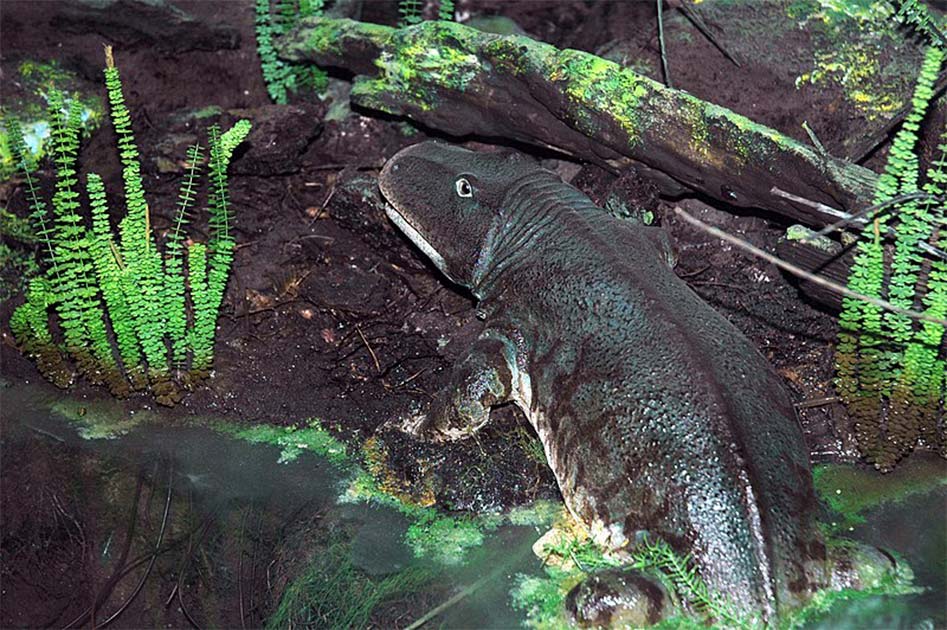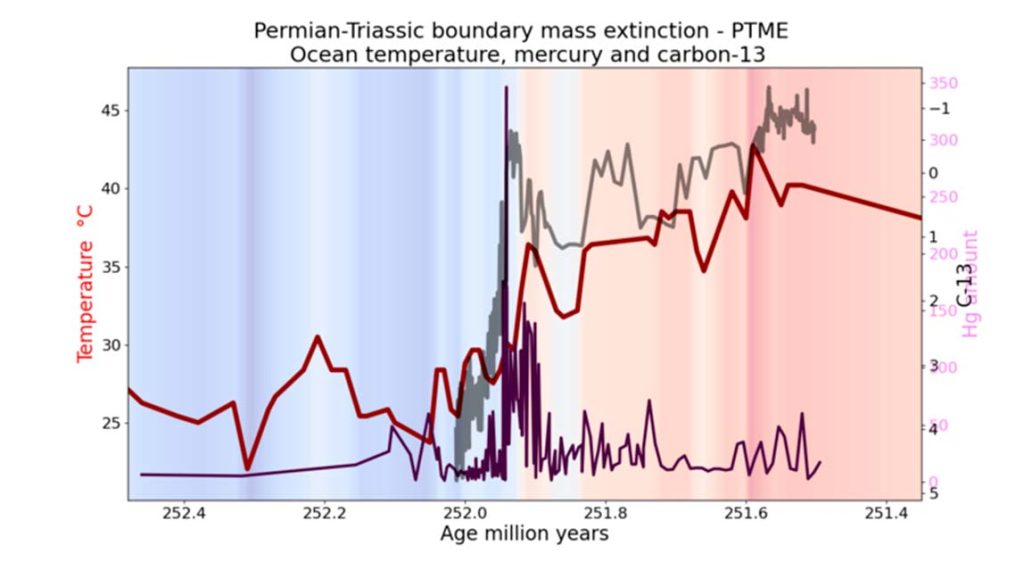The planet is heading into a period of great extinction. Human activities and pollution have accelerated global warming to such an extent that we have created an ecosystem unable to support much of the life within.
Our inability to control our destructive growth will, seemingly, result in the loss of much of our biodiversity. Our planet will become barren and homogenized, in service to commerce and short-term thinking.
But, on a planetary scale, this is not the deadliest of such extinctions. Nor is the catastrophe which killed the dinosaurs 65 million years ago.
The deadliest mass extinction happened roughly 250 million years back, destroying nearly 90 percent of the world’s flora and fauna. This extinction event was called the Permian Extinction, the Permian-Triassic Mass Extinction, or the Great Dying,
Before the dinosaurs walked the Earth, 70 percent of life on land and 90 percent of aquatic life was lost. What happened?
End of an Era
Such events are part of the natural order of things, of course. The Earth bounced back and gave rise to new species of animals and plants, albeit over millions of years.
Even after such a catastrophic event as the Permian extinction, life trickled back to earth’s land from the cracks. But the later extinctions were, to an extent, localized events with single inciting factors. The Permian extinction was far larger.

This perfect storm triggered a domino effect and led to the death of a large number of species. Rooted plants, animals and almost all aquatic life was wiped out. But, alarmingly, research performed on rock strata that date back to the era of the Permian extinction and carbon isotope studies have shown that the events that happened during the Permian extinction were somewhat similar to what is happening today.
- Human Evolution, and that Time we Faced Extinction
- Lake Natron: the Lake that Petrifies All that Swim in It
According to research and reconstructions, there was extensive volcanic activity in many areas like present-day Siberia. This volcanic activity killed a lot of flora and fauna and led to the formation of new rocks.
The volcanic activity and the triggered rock changes have created a rare molecule called coronene which is still found in certain areas. Thick lava beds were spread everywhere, and this led to massive changes around the world for a long time.
The lava beds also led to the emission of a lot of carbon gases like carbon dioxide and carbon monoxide. The carbon in the air was at some thousand ppm during this extinction period.
While our present world has a high carbon ppm, it still has only 45 ppm in the air. However, scientists are predicting that the level of carbon dioxide and other toxic gases will go up furthermore, which has created the speculation that an event similar to the Permian extinction can happen.
Another characteristic of the Permian extinction is similar to the global warming the world is experiencing today. During the Permian extinction, the temperature of the earth went up by 18 degrees Fahrenheit (10 degrees C), over what we experience today.
The rise in temperature during the Permian Extinction pushed the animals to adapt, evolve or die. The effect of the Permian extinction was not just on the land animals and plants; it also extended to water and aquatic ecosystems.
Permian extinction led to the acidification of the oceans and seas because of the increase of carbon dioxide and sulfuric gases in the atmosphere. The acidic gases in the atmosphere dissolved in the ocean water and brought down the pH of the water.
The acidic water corroded the corals and led to the death and dissolution of aquatic animals into the water. The shift in water acidity killed the previous species and led to the evolution of new species.

The Permian extinction also had a drastic impact on land and terrestrial plants. For example, the increased atmospheric temperature led to the ignition of wild forest fires and the mass extinction of flora.
A lot of areas which were earlier under forest cover were rendered barren. In the absence of forests and large tracts of plants, the soil was exposed to erosion and rocks were also exposed to the surface.
- (In Pics) Ten Extinct Animals which Survive only in Drawings
- The Megalodon: Could a Giant Shark be Hiding in our Oceans?
While life on land hit the reset button, all of the nutrients from pre-existing life washed into the oceans. There was a sharp spike in the level of nutrients in the water, which led to an explosion of life.
However, with the explosion of life, there was also a shortage of oxygen in the water, which led to the death of aquatic life. The dead and decaying matter inside the oceans increased. In this way, nearly 90 percent of aquatic life was lost to extinction.
Since there were many factors and many sequential events that led to the extinction of species, researchers term the Permian extinction as the perfect storm. The Permian extinction was brought about by the rise of temperature due to global warming, acidification and deoxygenation working together.
A Warning from History
Many researchers believe that although the present global condition is far from Permian extinction conditions, the conditions are mimicking the Permian extinction at a micro level. The present-day earth is also going towards an increase of carbon dioxide and acidic emissions that also give rise to acid rain.

Global temperature increases have led to the highest temperatures ever recorded, and natural calamities are increasing in frequency and scale. Many environmentalists believe that these changes and incidents are warning signs of future mass extinction.
Scientists are in the process of unearthing fossils from the Permian extinction event. There are many rare fossils under the ice of Antarctica that are being unearthed for further evidence related to the Permian extinction. The use of fossils from 250 million years ago can show transitionary adaptations that species like lizards developed for the first time.
The study of fossils from the Permian Triassic period can show us the ways in which nature can expedite evolutionary changes. The Permian extinction might never repeat, but mass extinction events have happened throughout natural history, and they can also happen in the future.
Top Image: Almost all biodiversity on the planet was lost during the Permian Extinction. Source: Erica Guilane-Nachez / Adobe Stock.
By Bipin Dimri